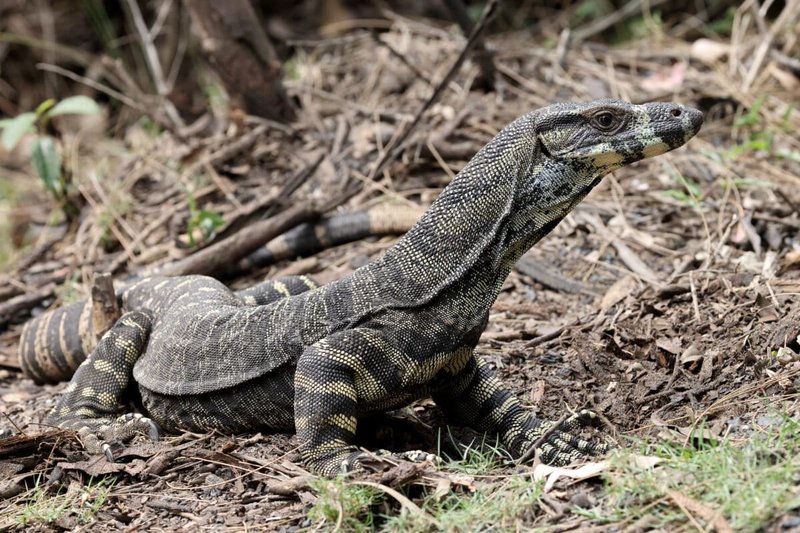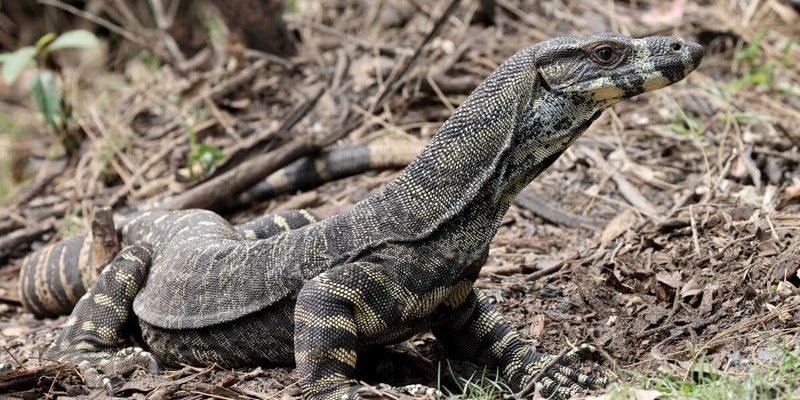
Imagine meeting an animal that not only shares your backyard but also captivates you with its intelligence and hunting prowess. That’s the monitor lizard for you! They’re not just pretty scaly faces; these creatures have some surprising features and habits that make them stand out in the reptile world. So, grab your favorite drink, and let’s dive into the top ten facts that will make you appreciate these incredible lizards even more.
1. Diverse Species
Monitor lizards belong to a large family with over 70 different species. They can be found in Africa, Asia, and Australia, each species adapting beautifully to its environment. For example, the Komodo dragon, which is the largest of the monitor lizards, can reach lengths of up to ten feet! In contrast, the dwarf monitor is only about a foot long but is just as fascinating.
These species vary not only in size but also in color and behavior. Some, like the Savannah monitor, are known for their robust bodies and beautiful patterns, while others are more streamlined for speed. It’s like a little family of superheroes, each with their unique superhero traits!
2. Keen Intelligence
Here’s the thing: monitor lizards are pretty smart. They have been observed using tools and displaying problem-solving skills that many other reptiles simply don’t possess. For instance, some species can figure out how to unfasten lids to access food, demonstrating a level of cognitive function that rivals some mammals.
Their intelligence is also reflected in their ability to learn from experience. If a monitor lizard encounters something new—say, a new type of prey or an unusual object in its environment—it can adapt its behavior based on previous encounters. This adaptability really showcases how these creatures have evolved to survive in the wild.
3. Impressive Senses
Monitoring their surroundings is crucial for these lizards. They have excellent vision, which helps them spot potential prey from a distance. Plus, their sense of smell is just as impressive. They use their forked tongues to pick up scent particles in the air, much like a snake. This helps them track down food or detect predators lurking nearby.
Furthermore, some monitor lizards can even sense temperature changes in their environment, which plays a role in how they hunt and find shelter. With these sharp senses, it’s no wonder they are such successful hunters!
4. Unique Hunting Skills
Speaking of hunting, monitor lizards are skilled predators. They primarily eat insects, small mammals, and even other reptiles. One fascinating hunting technique they employ is their ability to hunt in water. Certain species, like the Asian water monitor, are adept swimmers and can chase down fish and other aquatic prey with ease.
Their powerful jaws and sharp claws are perfect for capturing and subduing their food. Honestly, watching a monitor lizard hunt is like watching a nature documentary unfold right before your eyes—it’s an exhilarating sight!
5. Complex Social Behavior
While many reptiles tend to be solitary, monitor lizards can display some surprisingly social behaviors. For example, they may bask in groups, especially in warmer climates, or engage in head-bobbing displays to communicate with each other. This kind of social interaction is relatively rare among reptiles, making monitor lizards particularly interesting.
Some species, like the Black-throated monitor, are even known to exhibit parental care, where mothers will guard their eggs until they hatch. This level of care is not commonly found in reptiles, adding another layer to their intriguing social structures.
6. Conservation Status
Unfortunately, many monitor lizard species are facing threats due to habitat loss, poaching, and the illegal pet trade. The Komodo dragon, for instance, is listed as vulnerable due to declining populations in its native habitat. Conservation efforts are underway to protect these magnificent creatures, ensuring that they don’t disappear from our planet.
Participating in conservation projects, visiting wildlife reserves, or simply spreading awareness about the importance of these lizards can make a real difference. Remember, every little bit helps in keeping our planet’s biodiversity intact.
7. Unique Adaptations
Monitor lizards are equipped with some remarkable adaptations that help them thrive in their environments. One of these is their strong, muscular tails, which they can use for balance and even for defense against predators. A swift whip of their tail can deter even the most determined attacker.
Some species also have special adaptations for thermal regulation. For instance, in hotter climates, they may have lighter skin tones to reflect sunlight, while those in cooler regions might be darker to absorb warmth. This ability to adapt physically to their environment is a testament to their survival skills.
8. Fascinating Breeding Habits
Breeding in the monitor lizard world can be quite dramatic. During mating season, males will often engage in combat to win the right to mate with females. These battles can be intense and involve biting and wrestling, showcasing their strength and determination.
After mating, females typically lay eggs, often in nests dug in the sand or soil. In some species, the mother will stay nearby to protect her eggs until they hatch, ensuring that the next generation has the best chance of survival.
9. Cultural Significance
Monitor lizards have also carved out a niche in various cultures around the globe. In some places, they embody strength and resilience, often appearing in folklore and traditional stories. However, they sometimes face negative reputations due to misconceptions about their behavior and potential danger to humans.
In many societies, their skins are highly valued, creating a demand that can threaten their existence. This cultural complexity highlights the need for education and awareness about these magnificent lizards.
10. Popular Pets with Caution
Some monitor lizard species, like the Savannah monitor, are kept as pets and can be quite affectionate if properly cared for. However, owning one isn’t for everyone. They require a significant commitment in terms of space, diet, and care. They’re not the kind of pet you can just set on a shelf and forget about!
If you’re considering a monitor lizard as a pet, it’s essential to do your research. Make sure you understand their needs and behaviors, and be prepared for the responsibility that comes with caring for such an intelligent animal.
In conclusion, monitor lizards are more than just fascinating creatures; they’re a window into the complexities of nature. Their intelligence, unique behaviors, and adaptations make them a standout among reptiles. Whether you admire them in the wild, appreciate them in books, or think about adding one to your family, these lizards deserve our respect and care. Let’s celebrate the remarkable world of monitor lizards and ensure they continue to thrive for generations to come!

